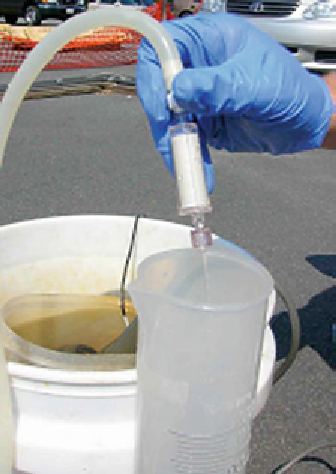Biomedical Engineering Reference
In-Depth Information
Figure 6.2. Sterivex
TM
filter used for groundwater sampling for MBT analysis (photo courtesy of
MO BIO Laboratories, Carlsbad, CA).
Figure 6.3. In-well retrievable media device (Bio-Trap
1
) used for groundwater sampling for MBT
analysis (courtesy of Microbial Insights, Rockford, TN).
RMDs facilitate the colonization of microorganisms onto a matrix that can be retrieved for
off-site laboratory analysis (Figure
6.3
). The advantages of RMDs over groundwater collection
include ease of storage and transport, and the potential for RMD arrays to provide a more
accurate representation of the microbial community surrounding a sampling well (Peacock
et al.,
2004
). RMDs may be more appropriate for analysis of microbes that live as biofilms.
RMDs supplemented with substrates also can serve as
in situ
microcosms. However, due to
biases resulting from the physical and chemical composition of the matrix, and the fact that the
devices are only exposed to standing water in wells, there is significant uncertainty regarding


Search WWH ::

Custom Search